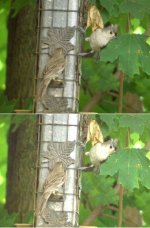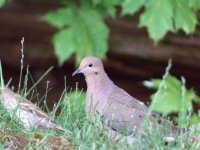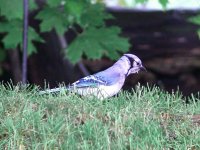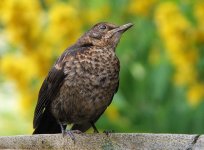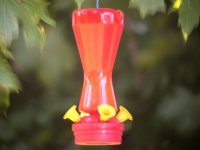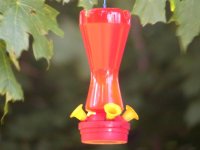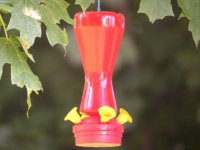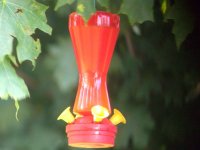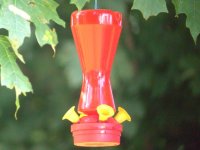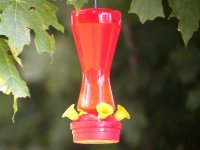FrankD
Well-known member
I was not sure exactly which forum to post this in..one of digiscoping forums (as this is what method was used) or possibly the photo critique (as that is what I am looking for).
I recently purchased a Casio Exilim EX Z1000 10.1 Megapixel digital camera to begin digiscoping with my Pentax 65 mm ED Angled spotting scope. I am using a Knight Owl 20 mm EWA eyepiece with the scope.
I started taking some pictures this morning and, overall, I admit to being fairly pleased with the results. About one in five pictures turns out as good as I would like but the other four turn out a bit grainy and dim. What I would like to know is the reason for this. Which one of the following could be the result?
1. The 3x optical zoom utilized on the digital camera (without the zoom the images look brighter and clearer)
2. The quality of the camera itself (fairly inexpensive for a 10 mp)
3. The fact that I am using a 65 mm spotting scope instead of an 80 mm
4. The camera's settings (I am running full auto)
5. The distance (45-60 feet on average)
6. The quality of the eyepieces on the scope
7. Something else I am not thinking of
Below is a typical representation of what I am referring to. I had to downsize it by about 1/4 in order to upload it into the forum. I can, ofcourse, used some imaging software to make it brighter and crisper but I do not know if I want to go that route every time I try to take a pic.
Thank you ahead of time for the help.
I recently purchased a Casio Exilim EX Z1000 10.1 Megapixel digital camera to begin digiscoping with my Pentax 65 mm ED Angled spotting scope. I am using a Knight Owl 20 mm EWA eyepiece with the scope.
I started taking some pictures this morning and, overall, I admit to being fairly pleased with the results. About one in five pictures turns out as good as I would like but the other four turn out a bit grainy and dim. What I would like to know is the reason for this. Which one of the following could be the result?
1. The 3x optical zoom utilized on the digital camera (without the zoom the images look brighter and clearer)
2. The quality of the camera itself (fairly inexpensive for a 10 mp)
3. The fact that I am using a 65 mm spotting scope instead of an 80 mm
4. The camera's settings (I am running full auto)
5. The distance (45-60 feet on average)
6. The quality of the eyepieces on the scope
7. Something else I am not thinking of
Below is a typical representation of what I am referring to. I had to downsize it by about 1/4 in order to upload it into the forum. I can, ofcourse, used some imaging software to make it brighter and crisper but I do not know if I want to go that route every time I try to take a pic.
Thank you ahead of time for the help.
Attachments
Last edited:




